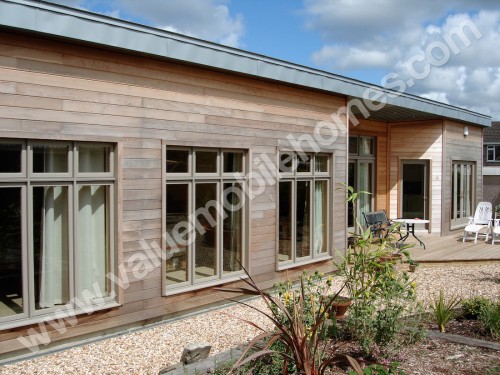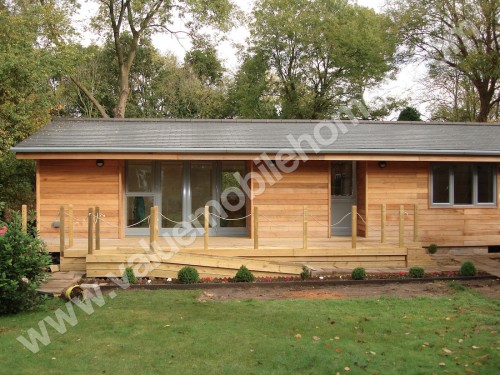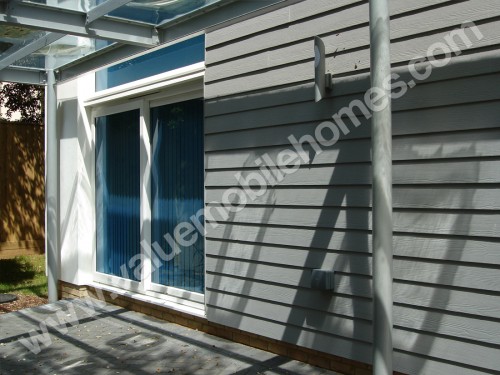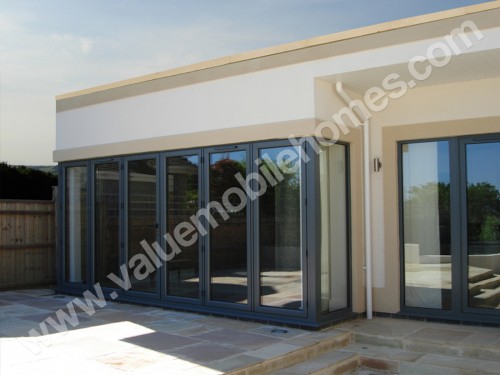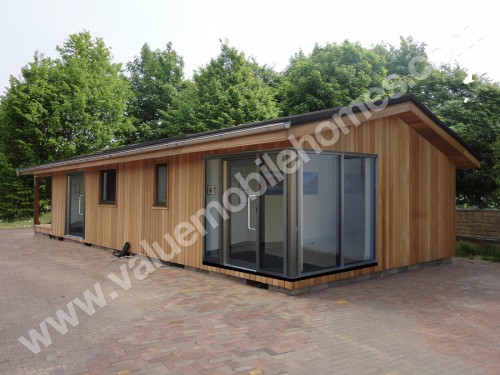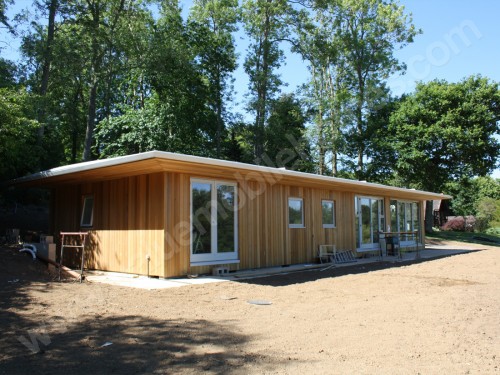VAT information sheet 04/13: taxing holiday caravans
This VAT Information Sheet updates and replaces VAT Information Sheet 11/12 ‘VAT Taxing holiday caravans’ issued August 2012 to reflect feedback received. The main change is to give further guidance on sales of second-hand caravans from 6 April 2013, including how to determine whether they were occupied before that date (paragraph 2.4 and 2.5 below). VAT Information Sheet 11/12 has now been withdrawn and Public Notice 701/20 Caravans and Houseboats will be updated in the coming months.
This VAT Information Sheet updates and replaces VAT Information Sheet 11/12 ‘VAT Taxing holiday caravans’ issued August 2012 to reflect feedback received. The main change is to give further guidance on sales of second-hand caravans from 6 April 2013, including how to determine whether they were occupied before that date (paragraph 2.4 and 2.5 below). VAT Information Sheet 11/12 has now been withdrawn and Public Notice 701/20 Caravans and Houseboats will be updated in the coming months.
1. Introduction
1.1 Who should read this Information Sheet?
Caravan manufacturers, caravan distributors and caravan park owners should read this information sheet.
However, this is most relevant to businesses that make or sell caravans that are longer than 7 metres(m) or wider than 2.55m, and which do not meet British Standard (BS) 3632:2005 (mainly static and larger touring caravans). There are no changes to the treatment of caravans that do not exceed 7m in length and 2.55m in width as these remain standard-rated for VAT (mainly standard touring caravans).
References to a caravan that meets BS 3632:2005 mean a caravan that is manufactured to the 2005 version of BS 3632 approved by the BS Institution and is therefore suitable for residential use (see section 3).
1.2 What is this Information Sheet about?
It provides guidance on how to establish the correct VAT liability of supplies of caravans following the changes announced at Budget 2012.
1.3 When do these changes take effect?
These changes apply to supplies of affected caravans (see para 1.1) that are made on or after 6 April 2013.
2. VAT liability of supplies of caravans
2.1 What are the old rules (prior to 6 April 2013)?
Under the old rules the supply of a caravan is either standard-rated or zero-rated depending on its size. A caravan is standard-rated if it does not exceed 7m in length and 2.55m in width. A caravan that is longer than 7m or wider than 2.55m is zero-rated. Removable contents (ie, goods that are not part of the structure of a caravan such as white goods, carpets, curtains and furniture) that are sold with a caravan are standard-rated.
2.2 What are the new rules (from 6 April 2013)?
Under the new rules, the VAT liability of a caravan is either be standard-rated, reduced-rated (5 %) or zero-rated depending on certain conditions which are set out below. For simplicity, this guidance focuses on sales of new and second hand caravans on or after 6 April 2013. The same rules apply to other types of supplies of caravans (eg, leases and deemed supplies) that are made on or after 6 April 2013. In all cases, the sale or lease of removable contents remains standard-rated.
2.3 Sales of new caravans on or after 6 April 2013
(a) The sale of a new caravan will be standard-rated if it does not exceed 7m in length and 2.55m in width, as with the current rules.
Example 1: on 6 April 2013, a business sells a caravan that is 7m long and 2.55m wide for £30,000 (including VAT). Under the old and new rules, the business must account for £30,000/6 = £5,000 VAT to HM Revenue and Customs (HMRC). It is not necessary to apportion the sale price between the caravan and removable contents in this example as both are standard-rated.
Note: the sale price is divided by six in this example to calculate the VAT due (at the standard rate of 20%) on the VAT inclusive sale price of £30,000.
(b) The sale of a new caravan will be reduced-rated if it is longer than 7m or wider than 2.55m, and is not manufactured to BS 3632:2005 (see section 3).
Example 2: on 6 April 2013, a business sells a new caravan that is 8m long and 2.50m wide, which is not manufactured to BS 3632:2005, for £30,000 (including VAT). It is estimated that 20% of the sale price relates to removable contents. Under both current and new rules, the business must account for £30,000×20 %/6 = £1,000 VAT on the removable contents.
Additionally, under the new rules, the business must account for £30,000×80 %/21 = £1142.85 VAT to HMRC on the sale of the caravan.
Note: the sale price is divided by 21 in this example to calculate the VAT due (at the reduced rate of 5%) on the VAT inclusive sale price of £24,000 (£30,000 × 80 %).
(c) The sale of a caravan will be zero-rated if it is longer than 7m or wider than 2.55m, and is manufactured to BS 3632:2005.
Example 3: on 6 April 2013, a business sells a caravan that is 8m long and 5m wide, which is manufactured to BS 3632:2005 for £30,000 (including VAT).
Again, it is estimated that 20% of the sale price relates to removable contents. Under both current and new rules, the business must account for £30,000 × 20%/6 = £1,000 VAT on the removable contents. No VAT is due on the caravan as it continues to be zero-rated.
2.4 Sales of second hand caravans on or after 6 April 2013
The liability of the sale of a second hand caravan on or after 6 April 2013 is determined in accordance with paragraph 2.3 unless it is longer than 7m or wider than 2.55m, was occupied before 6 April 2013 and meets BS 3632:2005 or an earlier version of that standard (see paragraph 3.1), in which case it can continue to be zero-rated.
In practice, we expect that many larger caravans will meet earlier versions of BS 3632. Therefore, provided that you can satisfy us (if required) that a caravan was occupied prior to 6 April 2013 and that it exceeds the minimum size requirements, if evidence that the caravan meets BS 3632 is not readily available, we will (absent evidence to the contrary) accept evidence of size and occupancy as sufficient to satisfy the condition for zero-rating of the sale of second hand caravans.
An example of evidence to the contrary could be an inspection report by a competent inspector stating that the caravan failed to meet the required residential standard.
2.5 How do I know whether a caravan has been occupied before 6 April 2013?
You will need to obtain evidence to confirm that the caravan has been occupied before 6 April 2013. Indicators will normally include one or more of the following:
- a pitch fee agreement/payment of pitch fees. Site records should provide an audit trail clearly identifying the caravan, the relevant sales invoice and details of the related remittance
- rental agreements – for example, where a caravan has been let for residential purposes, or for the sale of a holiday in the caravan. Records should provide an audit trail clearly identifying the caravan, the relevant invoice and details of the related remittance
- payment of utility bills such as gas, electricity and water. Site records should provide an audit trail to identify the caravan, pitch number, that can be verified against a rental or sales invoice to confirm occupation
- registration for/payment of council tax. Records should clearly identify the caravan and the relevant pitch number
- the date the caravan was sold. This would normally be evidenced by a full audit trail, clearly identifying the caravan, the sales invoice and details of the related remittance. This indicator needs to be backed up with other records as indicated above
HMRC will not accept the following as evidence of occupation:
- use of the caravan as a sales demonstrator
- use of the caravan as a sales office
- free use by members of staff or occupation that is not evidenced by a licence agreement, invoice for the sale of a holiday or similar
2.6 How do I calculate the VAT due on the sale of a second hand caravan?
The method of calculating the VAT due on the sale of a second hand caravan will be similar to the examples above, although some sales may qualify for the second hand margin scheme. Sales of caravans by private individuals or businesses that are not liable to be VAT registered will be outside the scope of VAT.
2.7 Can I apply the margin scheme to second hand sales?
Where you purchase a caravan from a private individual or a business that is not registered for VAT, the sale may qualify for the second hand margin scheme provided all of the record keeping requirements of the scheme are met. This allows you to account for VAT on the difference between the sale and purchase price. The following examples illustrate how the second hand margin scheme applies to sales of second hand caravans on or after 6 April 2013.
Example 4: a business buys a caravan from a private individual that is less than 7m long and 2.55m wide on 6 April 2013 for £20,000 and resells it on 30 April for £25,000. As the caravan is less than 7m long and 2.55m wide its resale will be standard rated. Also as it has been purchased from a private individual the sale qualifies for the margin scheme. Therefore, the business should account for (£25,000–£20,000)×1/6 = £833 VAT to HMRC. It is not necessary to consider the caravan and removable contents separately as they are both standard-rated. Also, it is not necessary to consider whether BS3632:2005 has been met as the dimensions of the caravan confirm that the sale is standard-rated.
Example 5: a business buys a caravan from a private individual or unregistered business that is 8m long and 2.55m wide, which meets BS 3632:2005 (or an earlier version) on 6 April 2013 for £20,000 and resells it on 30 April for £25,000. The caravan was occupied prior to 6 April 2013 and it is assumed that 10% of the margin relates to removable contents. As the caravan is longer than 7m, meets BS 3632 and was occupied prior to 6 April 2013, its resale will be zero-rated. Therefore, VAT will only be due on the removable contents and so (£25,000–£20,000)×10%×1/6 = £83 VAT will be due to HMRC.
Example 6: the same as example 5 except the caravan was not occupied prior to 6 April 2013. As the caravan was not occupied prior to 6 April 2013, is longer than 7 m and does not meet BS 3632:2005 its resale is reduced-rated. Therefore, the VAT due on the caravan is (£25,000 – £20,000) × 90% × 1/21 = £214. The VAT due on the removable contents is (£25,000 – £20,000)×10%×1/6 = £83.
Example 7: the same as example 5 except the caravan was not occupied prior to 6 April 2013 and does meet BS 3632: 2005. As the caravan is longer than 7 m and does meet BS 3632:2005 its resale is zero-rated. Therefore, VAT due on the removable contents is (£25,000–£20,000)×10%×1/6 = £83.
3. BS 3632
3.1 What is BS 3632:2005?
BS 3632:2005 is the current standard for residential caravans and is approved by the BSInstitution. It confirms that a caravan is designed and manufactured for continuous year round occupation and is therefore suitable for residential use. Earlier versions of the standard were published in 1963, 1970, 1981, 1989 and 1995.
3.2 Why use BS 3632:2005 to determine which caravans are zero rated?
Following consultation we decided that the best way of distinguishing between residential and non-residential caravans is to base the distinction on the single test of whether they meet BS 3632 or not. Further information about the outcome of the consultation can be found in the document entitled: ‘Summary of Responses: VAT – Addressing borderline anomalies’, which is published on the HMRC website. This has the advantage of simplicity as any caravan that meets BS 3632 will benefit from zero-rating throughout the supply chain. It also means that the VAT distinction is based on an objective criterion. Caravans meeting BS 3632 meet key health and safety requirements that make them suitable as residential accommodation.
3.3 How do I establish whether a caravan is manufactured to BS 3632:2005?
The easiest way of demonstrating that a caravan meets the requirements of BS3632:2005 is a badge provided by the National Caravan Council (NCC). This badge signifies that the product carries the manufacturers’ declaration of compliance with BS3632:2005 standard under the NCC’s Manufacturer Approval Scheme.
Alternatively, you may consider requesting written confirmation from the caravan manufacturer that the standard has been met. You should retain this confirmation to evidence that the sale qualifies for zero rating.
3.4 If BS 3632 changes in the future will the VAT liability of caravans also change?
No. The VAT liability of caravans is directly linked to the 2005 version of the BS and changes to that standard (eg, where the standard requires a higher specification of caravan) will not affect the VAT liability of caravans, unless further changes are made to the VAT legislation.
3.5 What if a caravan meets an earlier version of BS 3632?
For sales of new caravans on or after 6 April 2013, zero-rating is only available for caravans that meet BS 3632:2005. Second hand caravans that were occupied prior to 6 April 2013 that meet an earlier version of the standard may benefit from zero-rating where the conditions in paragraph 2.4 are met.
4. Who can I contact for further information?
If you have a query for which you have been unable to find the answer within this VAT Information Sheet please contact the VAT Helpline on Telephone: 0845 010 9000.
The Helpline is available Monday to Friday 8am to 6pm.
If you have hearing difficulties, please ring the Textphone service on Telephone: 0845 000 0200.
